Solar Roof Tile | GainSolar
What are solar roofing tiles?
Solar tiles, also known as PV tiles or solar shingles, are designed to look like traditional roofing materials, such as asphalt shingles or slate, while generating electricity. Solar shingles (or photovoltaic tiles) are a way to seamlessly integrate solar technology into your home without compromising the natural design of your home. Unlike traditional solar panels mounted on roof tiles, solar shingles can completely replace your roof tiles. Although solar shingles look different from traditional solar panels, they work on the same principle. This clever alternative means you can use solar power to generate electricity in style. Solar shingles are a solar solution called Building Integrated Photovoltaics (BIPV).
Solar tiles and solar panels
Solar tiles are similar to asphalt shingles or slate and are installed flush with the roof surface, meaning they can be embedded into the roof itself. By replacing and resembling the surrounding roof slate, the design can be integrated into the aesthetics of the roof. Traditional PV panels are mounted on mounting brackets that sit on top of the shingles or slate. There is usually a gap between the panel and the roof, which is a significant aesthetic loss as well as a safety hazard.
Solar roof tiles are more suitable for new construction or whole house roof renovation projects; PV panels are installed without special requirements, but the process of mounting brackets can damage the original roof structure.
Currently, photovoltaic tiles can achieve 150W per square meter, with a conversion efficiency of 18.9%. Photovoltaic panel power per square meter 225w, conversion efficiency can be achieved 20%.
The service life of PV tiles is >30 years, and the service life of PV panels is about 20 years. Therefore, in the whole life cycle, the difference in power generation between the two is not large.
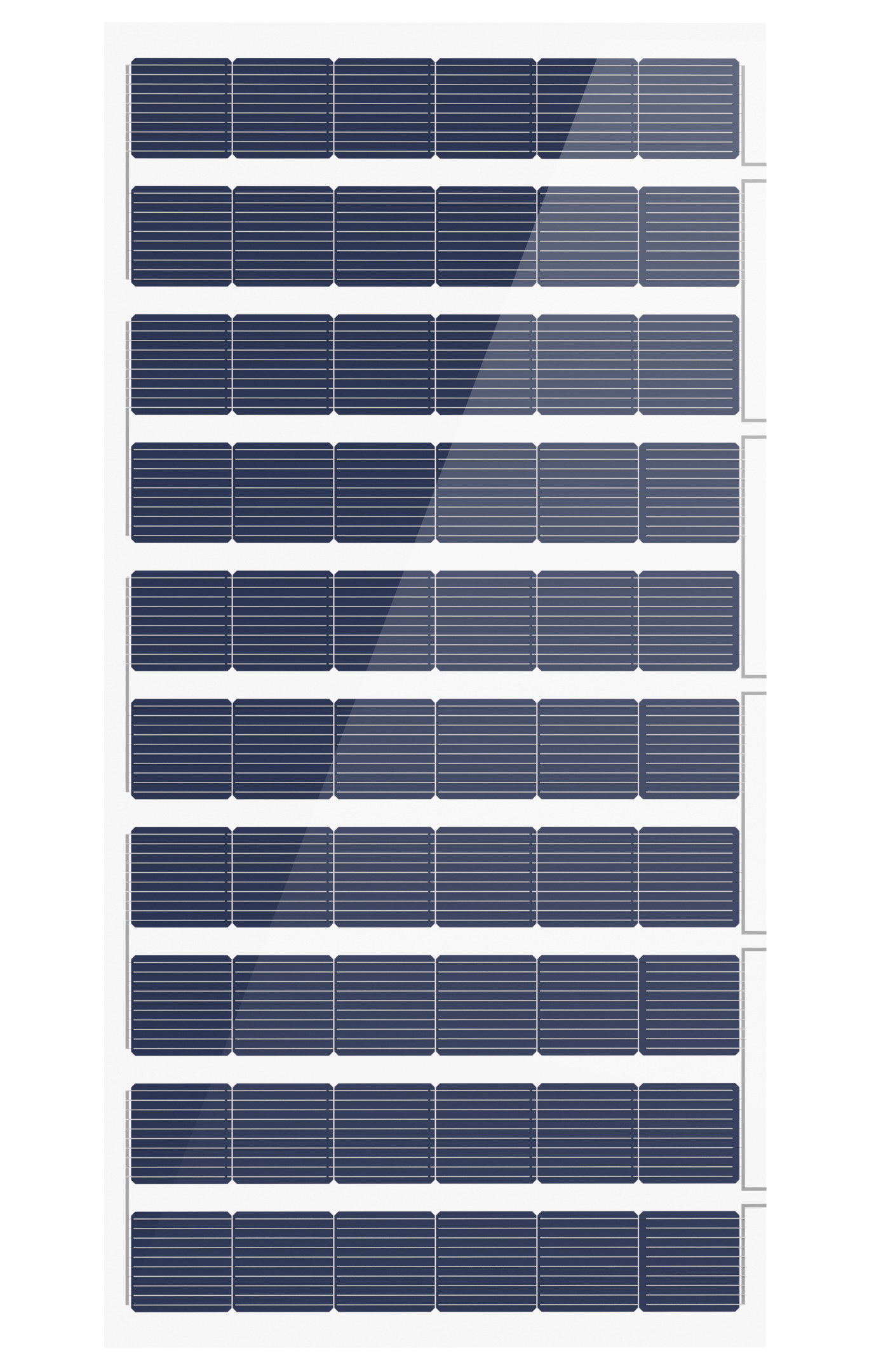
Advantages of Solar Tile
Solar roof tile has architectural grade standard, class A fireproof, super pressure resistance can be stepped on, hail resistance grade Φ25mm/23m/s, can achieve the same life as the building. Triple waterproof design, passed GB/T 36584-2018 5.1 waterproof test
Its unique component design can achieve ventilation and heat dissipation and quick maintenance. Solar roof shingles are more than three times stronger than ordinary roof shingles and are designed for all-weather protection. Solar roofs last longer than regular roofs and are designed to protect your home for decades.
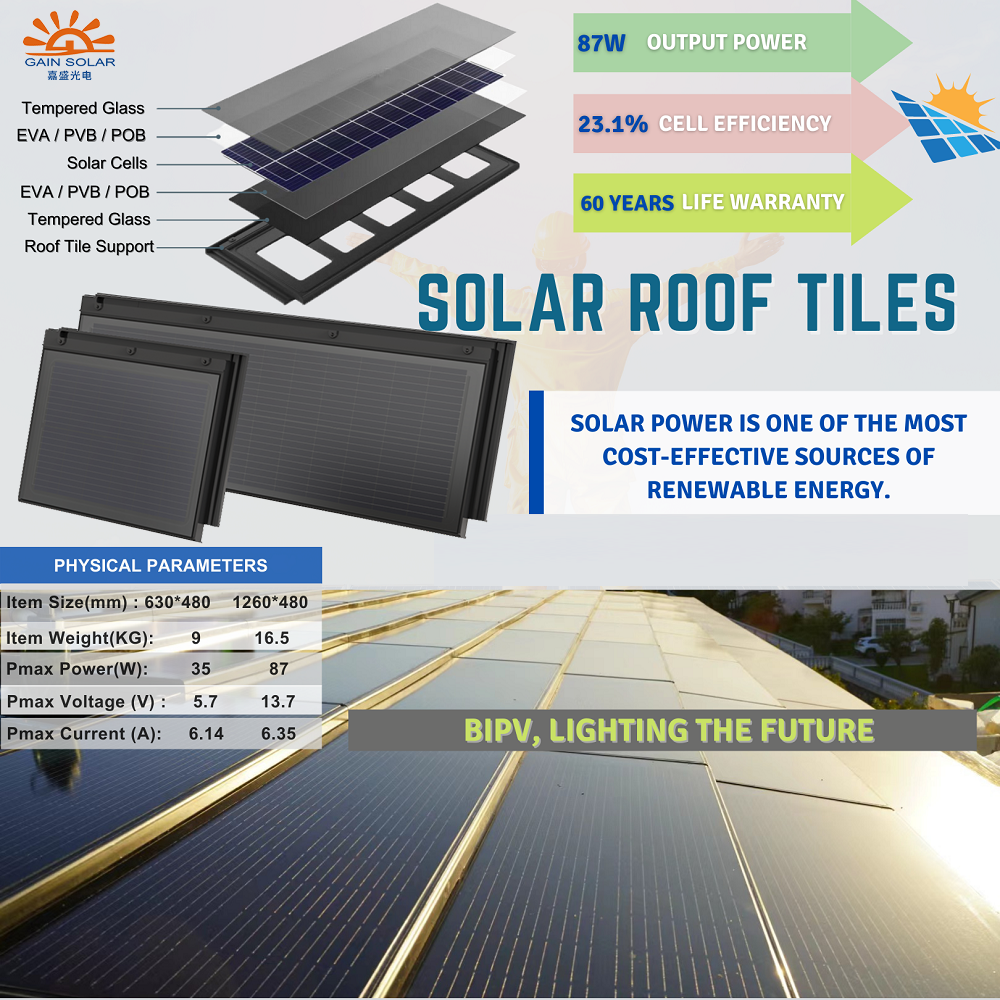
How long does a solar roof last?
PV tiles last at least 25 years (the life of the building) and come with two warranties - a product warranty and a performance warranty. If there is a problem within 5 years of your purchase, Gain Solar promises to replace or repair the product free of charge or refund the market price.
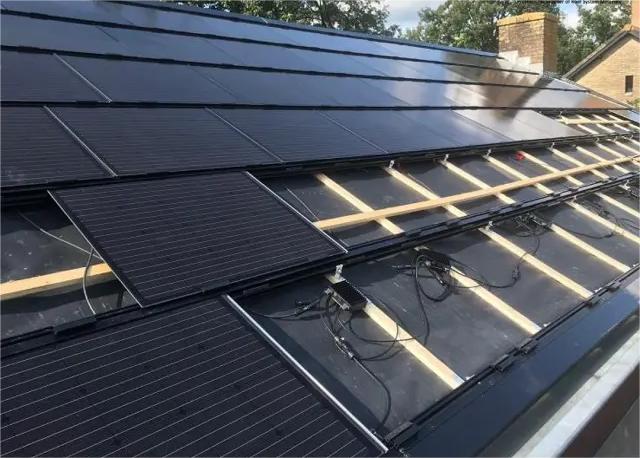
Why are there single and double pane roofing shingles?
It has to do with the weight of the roof. Single and double glazing depend on the weight of the components, light is single glass, heavy is double glass.
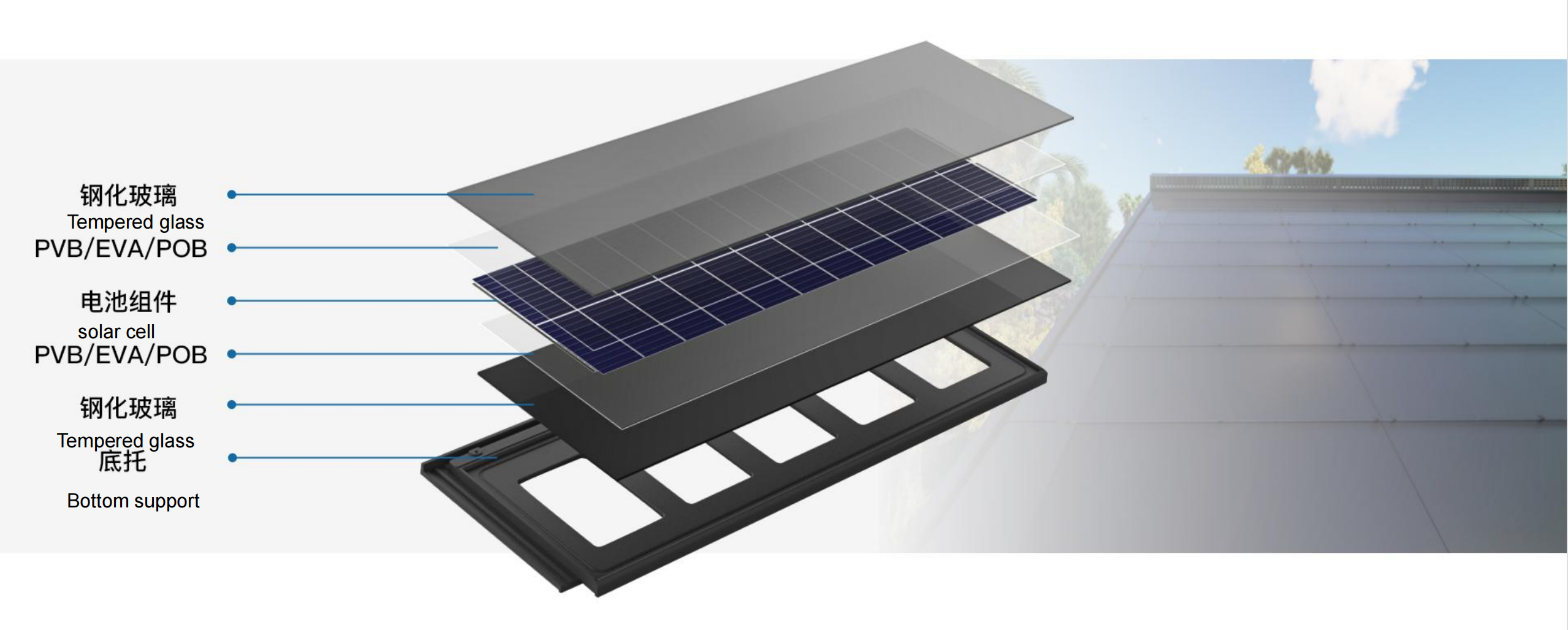
Roof Tile Installation
Photovoltaic tile is a kind of roofing material that integrates photovoltaic and building, it is suitable for single-slope or multi-slope roofs with slope more than 15 degrees and less than 60 degrees. As a roofing material, it not only matches the style of the building itself, but also replaces the traditional tile material, and at the same time endows it with the power generation function, thus making the building itself truly zero carbon. The installation of photovoltaic tiles is not much different from the installation of ordinary roofing materials, and Jia Sheng is equipped with professional installation instructions. A normal roof can be installed within 2 days.
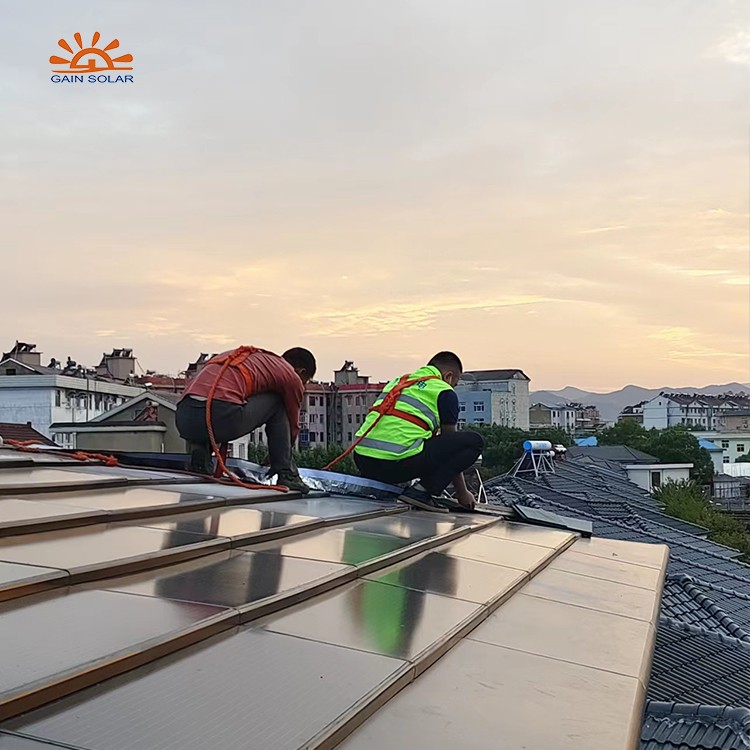
FAQ
Does it still make sense to take solar panels now that the netting may not take place and something will take its place?
It remains useful to have solar panels installed, despite the fact that the netting scheme changes. If the solar panels are purchased before 2023, you will benefit from the maximum netting percentage (100%) until 2031. After 2023, this percentage will decrease, but it will still be attractive to install solar panels on your roof. This calculation has been worked out here: Solar panels: less netting, yet attractive | Environment Central
Can the solar panel be damaged by wind/snow?
Solar panels are well attached to the roof and can take a beating. The panels are so well secured that they can even withstand speeds of up to 150 km/h . Since the surface of the solar panels is very slippery, the snow will slide off in most cases. As a result, the generation of solar energy is often not hindered. An ice layer can form on the solar panel, which will melt away automatically as soon as it stops freezing.
My installer had calculated much more yield for my solar panels. Is there anything I can do about this?
The yield depends on several factors, including the weather. If your installer has charged you more revenue than is realized in practice, we advise you to contact your installer about this.
Can I also store my excess energy production somewhere?
Yes, this is possible, for example, using a home battery. This is a storage place where you can keep your unused generated energy.
Related Information
Contact Us